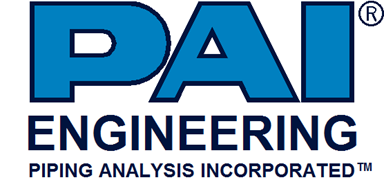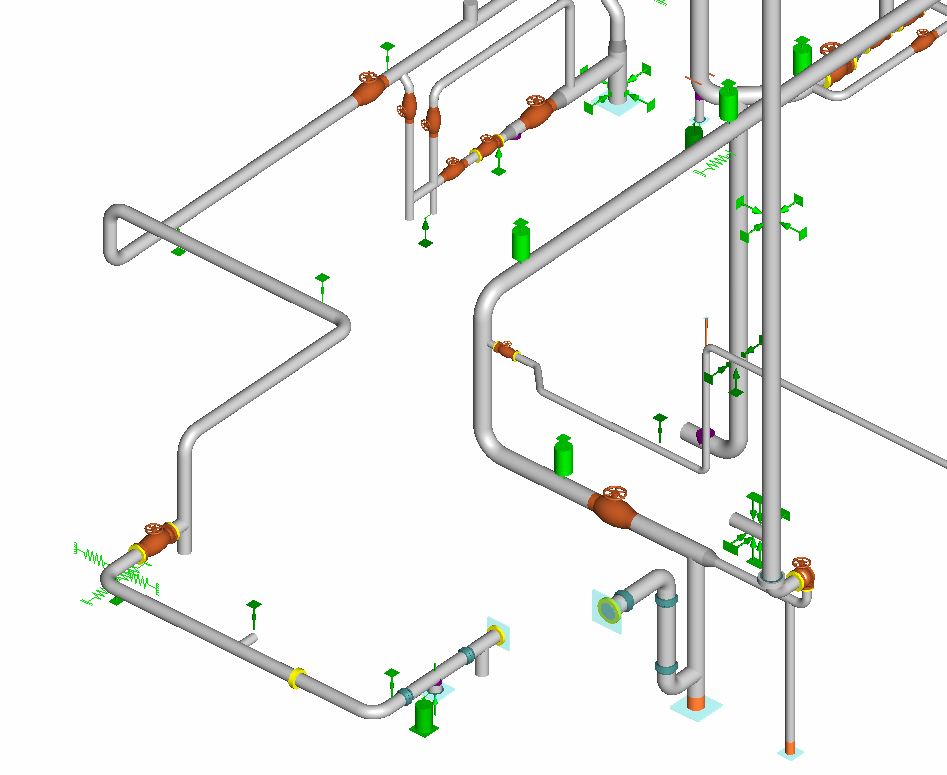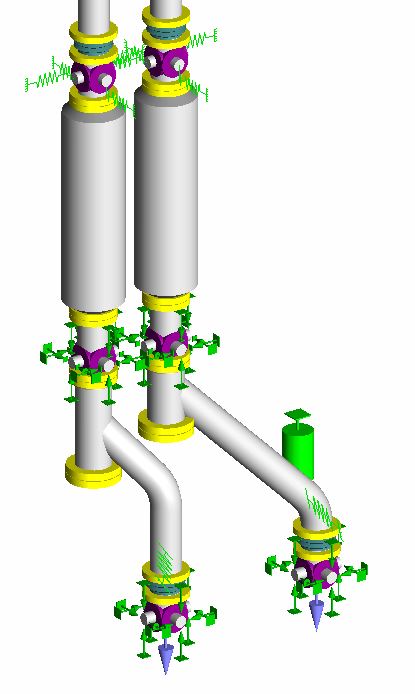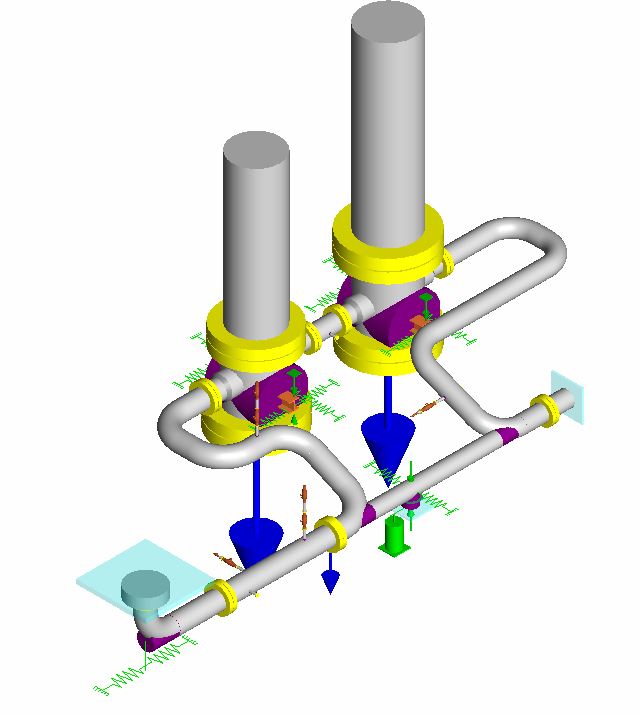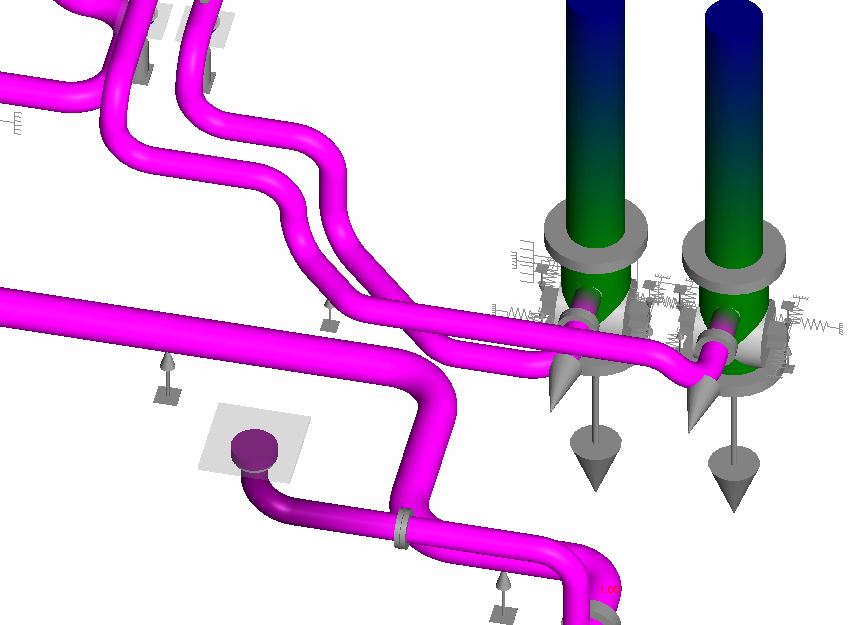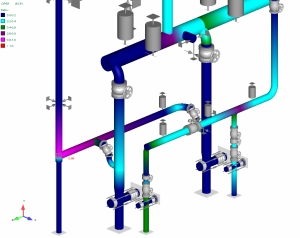The analysis of piping stress and flexibility lies at the core of our business. We find that unexpected mechanical problems requiring frequent maintenance and/or shut-downs are often caused by an insufficient level of quality in the design of the connected piping system and related structures. Efficiency and therefore profitability suffer, leading ultimately to permanent damage and high costs for repair and maintenance.
In many cases, original designs do not consider temperature differentials during non-equilibrium conditions such as start-up, shut-down, rapid restart or other upset conditions. In situations like these, system elements such as equipment nozzles, foundations, piping flanges, spring supports, rigid supports and other system elements can be overloaded above the levels originally anticipated by the designer. This can lead to serious problems.
PAI ENGINEERING has years of experience in analyzing the flexibility of and stresses associated with piping and related structures. Our expertise combined with the following commercial programs have consistently produced reliable answers to complicated problems for numerous satisfied customers:
CodeCalc© provides standard ASME Code calculations for common pressure vessel assessment. An adjunct program determines stresses at a vessel shell / attachment intersection: The calculations report the WRC 107 and/or WRC 297 analysis, based on the theory of plates and shells work of Professor P.P. Bijlaard, for certain pressure containing shells-of-rotation with nozzle penetrations. The results indicate longitudinal and circumferential membrane and direct shear stress due to externally loaded vessel shell connections, and longitudinal and circumferential stresses due to vessel internal pressure. These stresses are summed as the largest difference of principal stresses for the combined stress intensity. The combined stress intensity is compared to the allowable stress. Reinforcing pad thickness and diameter are automatically designed and evaluated.
Bentley AutoPIPE© calculates static and dynamic response properties of complex piping systems and structures using finite element techniques using beam theory elements, and solves one-dimensional transient heat transfer problems for piping. The program can be used to analyze a wide variety of problems. The static capability includes the computation of piping and structural deformations and member loads and stress caused by an arbitrary set of thermal loads, applied loads, and displacements. The dynamic capabilities include mode shapes and natural frequencies, response spectra, phased harmonic load analysis, time history dynamic analysis and force spectra analysis. For modal analysis, AutoPIPE can automatically insert mass points along elements. AutoPIPE provides built- in fluid transient synthesizers for calculation of waterhammer, steamhammer, and relief valve forces, which are integrated with time history dynamic analysis.
PAI-Pipedynamic is our own similar piping/structures program used here for many years. The computational method is Argyris finite element analysis tensor analysis of Castigliano’s Theory of Equilibrium of Elastic Structures. Stresses are calculated in accordance with first principles of stress analysis, the Huber, von Mises, Hencky failure theory, and the Tresca shear theory of failure theory as modified/required by the ANSI/ASME piping and vessel codes, including subsections for nuclear piping and components.
For more information contact us at +1 (225) 292 9709

